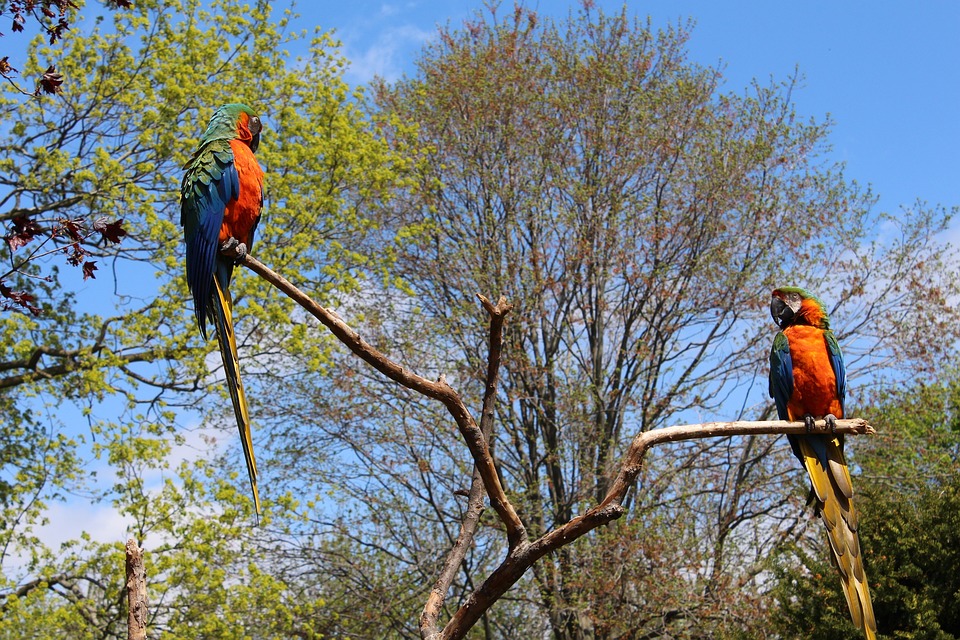Parrots, like humans, can experience shyness and timidity. These traits can be more prominent in parrots that have had limited socialization or have experienced a traumatic event. However, with the right approach and a little patience, you can help your shy or timid parrot build confidence and become more comfortable in its environment. In this article, we will delve into the use of positive reinforcement techniques to encourage your parrot’s self-assurance and provide answers to frequently asked questions about parrot behavior.
Understanding Shyness and Timidity in Parrots
Before we explore the methods of building confidence, it is important to understand the underlying causes of shyness and timidity in parrots. Parrots are highly intelligent creatures that can be easily affected by their environment and past experiences. Shyness and timidity may manifest as fear, withdrawal, or avoidance behaviors. Some common causes of these traits can include:
1. Insufficient socialization: Parrots that have not been adequately exposed to various stimuli, including different people, animals, and environments, may become shy or timid.
2. Traumatic experiences: Parrots that have encountered traumatic events, such as abusive handling or living in stressful conditions, may exhibit fearful behaviors as a result.
3. Genetic predisposition: Some parrot species may have a genetic predisposition towards shyness or timidity, making them more prone to these behaviors.
Using Positive Reinforcement to Encourage Confidence
Positive reinforcement is a powerful tool that can help your parrot build confidence and overcome shyness or timidity. This technique involves rewarding desired behaviors to encourage their repetition. Here are some effective strategies to implement positive reinforcement with your parrot:
1. Identify desirable behaviors: Observe your parrot closely and identify behaviors that reflect a slightly higher level of confidence. These can include stepping onto your hand, exploring new toys, or vocalizing in a comfortable manner.
2. Offer rewards: Once you have identified desirable behaviors, reward your parrot with its favorite treat, verbal praise, or gentle petting. This positive association will encourage your parrot to repeat the behavior.
3. Gradual exposure to new experiences: Introduce your parrot to new situations or stimuli gradually, ensuring they feel safe and comfortable. For example, if your parrot is shy around strangers, start by introducing them to one person at a time in a neutral environment.
4. Create a supportive environment: Provide your parrot with a nurturing environment that includes plenty of mental and physical stimulation. Offer a variety of toys, perches, and environmental enrichment to boost their confidence and curiosity.
5. Patience and consistency: Building confidence takes time, so be patient with your parrot’s progress. Consistency is key – maintain a routine, reinforce positive behaviors consistently, and avoid situations that may cause undue stress.
Frequently Asked Questions (FAQs) about Parrot Behavior
Q1: How long does it take for a shy or timid parrot to gain confidence through positive reinforcement?
A1: The time it takes for a parrot to gain confidence can vary depending on the individual bird and its previous experiences. It is crucial to be patient and consistent, as progress may take weeks or even months.
Q2: Can I use punishment to discourage shy or timid behaviors in my parrot?
A2: Punishment can have adverse effects on a parrot’s confidence and trust. It is best to focus on positive reinforcement to encourage desirable behaviors and gradually fade out undesirable ones.
Q3: Are there any specific parrot species that are more prone to shyness or timidity?
A3: While individual variation exists, some parrot species, such as African Greys and Amazons, may be more prone to shyness or timidity. However, with proper socialization and positive reinforcement, these behaviors can be mitigated.
Q4: How can I tell if my parrot is feeling stressed or overwhelmed during the confidence-building process?
A4: Signs of stress in parrots can include feather plucking, excessive screaming, aggressive behavior, or regurgitation. If you notice any of these signs, it is advisable to consult an avian veterinarian or an experienced parrot behaviorist.
Remember, every parrot is unique, and it is essential to tailor your approach to suit your bird’s specific needs. By using positive reinforcement techniques, you can help your shy or timid parrot develop confidence and flourish in its environment.









